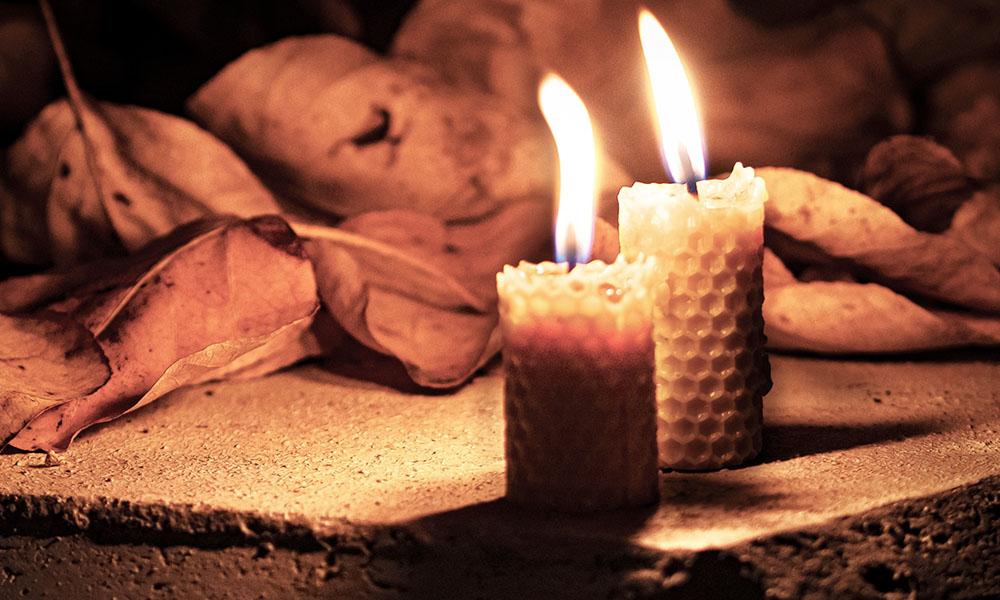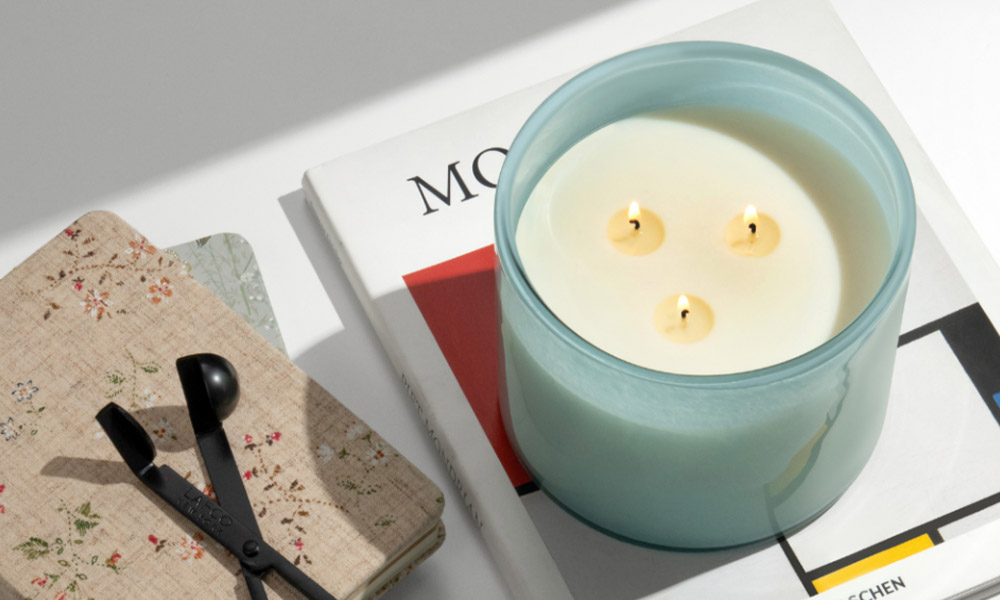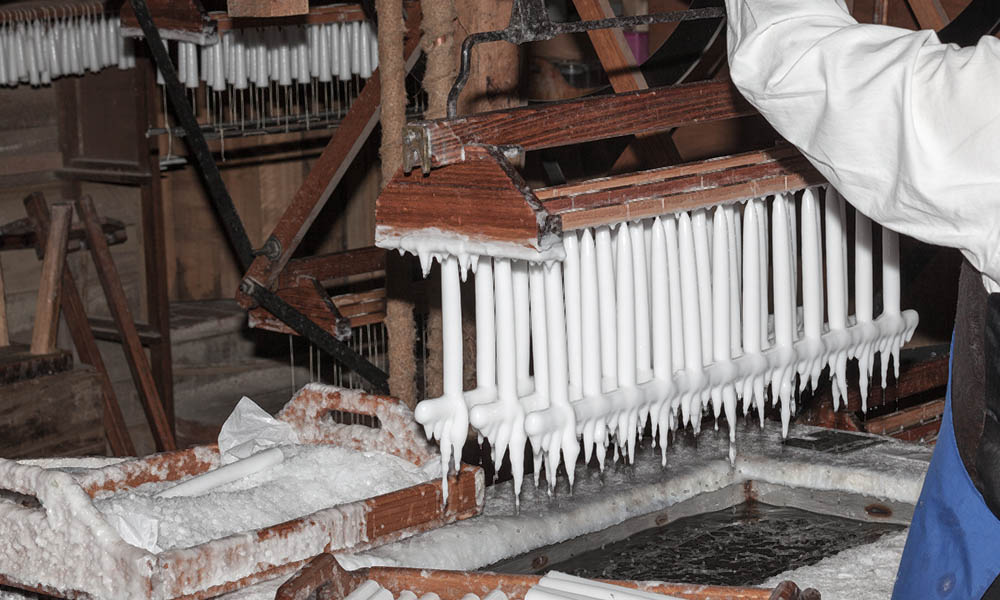The long and storied history of candles dates back to ancient civilizations when candles were the primary light source for homes. They also played a quintessential role in cultural ceremonies and spiritual worship. While still relevant in these applications, the modern-day candle has added another role to its resume – one of decoration.
The art of candle making has changed dramatically over the centuries, but the simple candle’s purpose has remained the same: to bring light into darkness.
The modern candle brings more than physical light, however. With the addition of fragrance and design, today’s candles have the power to brighten the spirit as well as the home. In this brief history of candle making, we’ll explore the candle’s evolution from a utilitarian necessity into a source of comfort for people across the world.
The Origins of Candle Making
As is true for many inventions we continue to benefit from today, we owe the creation of the candle to the ancient Romans. The first candles were created by repeatedly dipping rolled papyrus in tallow or beeswax and burned in homes, during travel, and in religious ceremonies.
Though the Romans are often credited with the creation of the candle, evidence suggests the ancient Egyptians, Japanese, and Chinese also used wicked candles.
There is evidence of wick candles being made in Egypt as early as 3000 B.C. Around the same time, the Chinese were using rice paper for wicks and wax from insects and seeds to make candles, while the ancient Japanese used tree nuts for wax and the Indians boiled the fruit of the cinnamon tree for wax.
Candles have also played an important role in religious ceremonies throughout the world, such as the Jewish Festival of Lights (Hanukkah), which began in 165 B.C. and has included the use of candles ever since.
Changes Throughout History

Though ancient Eastern cultures relied primarily on plant-based waxes, Western cultures largely made candles from rendered animal fat called tallow. Beeswax candles were introduced in Europe during the Middle Ages, providing a cleaner, less foul-smelling burn. Because beeswax candles were expensive, however, their use was largely limited to religious ceremonies.
By the 13th century, candle making had become a guild craft in France and England. Candlemakers known as chandlers travelled from house to house, making candles from kitchen fats. In colonial America, women led innovations in candle making with the discovery that boiling bayberries produced a clean-burning, sweet-smelling wax.
The whaling industry of the 18th century heralded in the first significant change in candle making since the Middle Ages. Spermaceti, a wax obtained by crystallizing sperm whale oil, became readily available and offered a brighter, less repugnant alternative to tallow. It was during the 19th century, however, that most of the developments that led to modern candle making processes occurred.
The Path to Modern Candle Making
During the 1820s, French chemist Michel Eugene Chevreul developed a process for extracting stearic wax from animal fatty acids. Stearin wax was hard and durable but, unlike tallow, it produced a clean burn. In 1834, an inventor named Joseph Morgan further revolutionized the industry when he created a device that mechanized molded candle production. With these revolutionary advancements in technology along with the introduction of paraffin wax in the 1850s (making them more affordable), candles quickly became a readily available commodity everyone could enjoy.
Though the discovery of electricity put a damper on the candle industry, the popularity of candles was renewed during the first half of the 20th century as oil and meatpacking industries grew in the U.S., increasing the availability of paraffin and stearic acid.
During the 1980s, consumer interest in candles as decorative items began to escalate. No longer limited to practical use, candles quickly became available in a broad array of shapes, colors, and sizes. Manufacturers began adding fragrance which led to a surge in popularity – the first instance in over a century in which the popularity of candles had grown significantly.
As concerns about the environment have grown, chemists have begun to develop cleaner, more sustainable candle-making ingredients like soybean wax. Soy wax is made from soybeans, a renewable resource that is biodegradable and free from chemical pesticides and herbicides. Soy wax burns cleaner than traditional waxes, producing very little soot and releasing fewer toxins into the air.
Additionally, soy wax has a lower melting point, which means that it burns longer than traditional waxes and can also hold more fragrance oil, resulting in a stronger scent. This makes soy wax a more sustainable and eco-friendly alternative to traditional candle-making ingredients.
Established in 1992, the Luxury Articles and Fragrance Company (LAFCO), follows the European tradition of botanical based fragrances and uses a soy wax blend to create sustainable home fragrance solutions.
How Are LAFCO Candles Made?

Pure essential oil-based fragrance lies at the heart of the LAFCO home fragrance product lineup which includes an extensive selection of blown glass reed diffusers, body care products, and scented candles.
The LAFCO House & Home Collection is a luxury line of scented candles that was first introduced in 2007. The collection was curated with the intention of using fragrances to transform any space into an immersive sensory experience. The candles are presented in eye-catching, handcrafted blown-glass vessels, and are meticulously crafted using a premium soy wax blend and 100% cotton wicks. This combination guarantees a clean and even burn, leaving the room filled with your desired fragrance, free of any soot or pollutants.
Shop LAFCO’s extensive candle selection and choose from dozens of luxurious fragrances in seven fragrance families. Candles range in size from the 1.9-ounce votive and travel-friendly 3-ounce candle to the impressive 86-ounce three-wick candle.



I loved learning about the ancient civilizations that pioneered candle making! The part about the Egyptians using beeswax to create candles for their gods was fascinating. It’s amazing to see how much wax varieties have evolved since then. LAFCO New York’s current candle line is a testament to the art form’s enduring appeal.